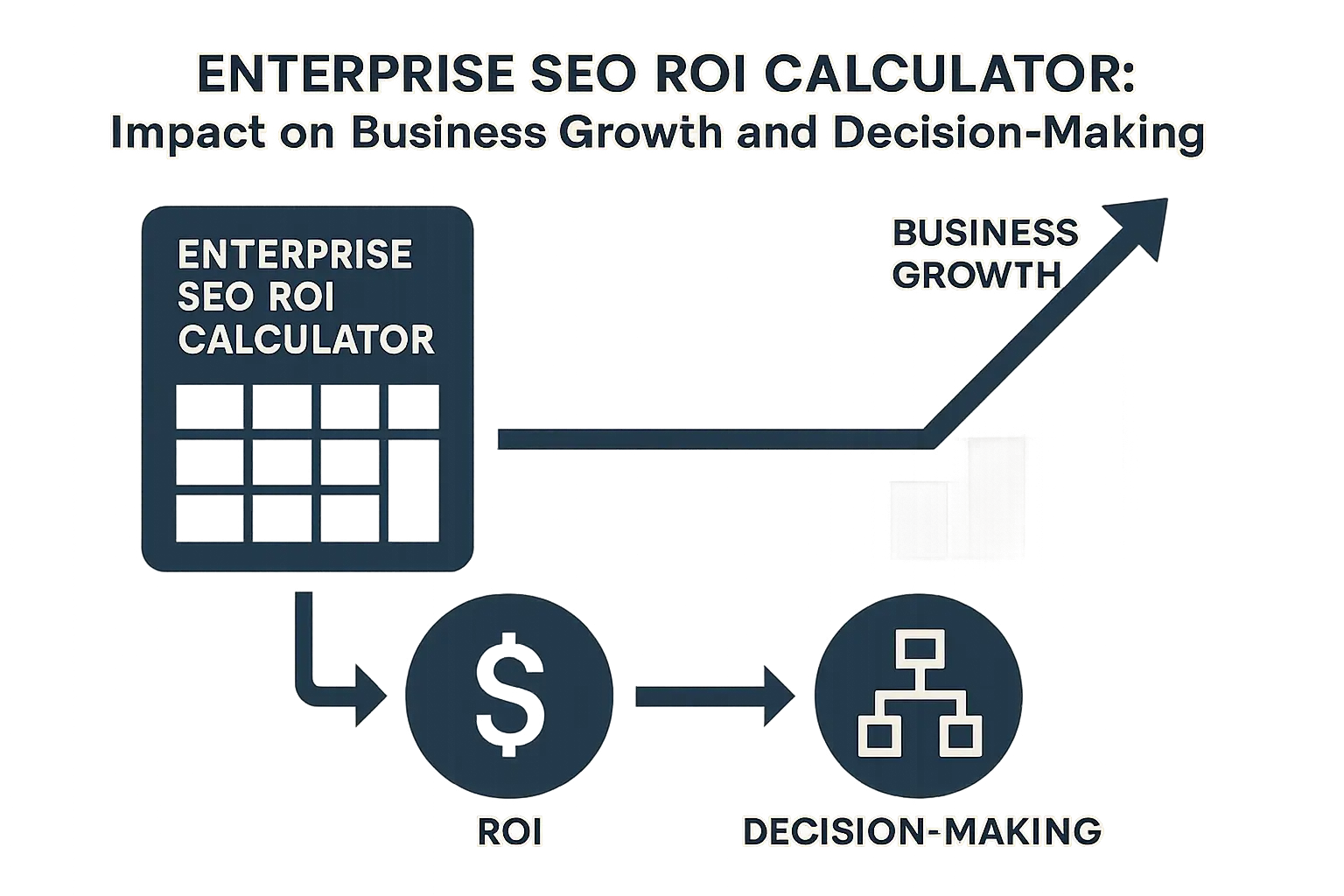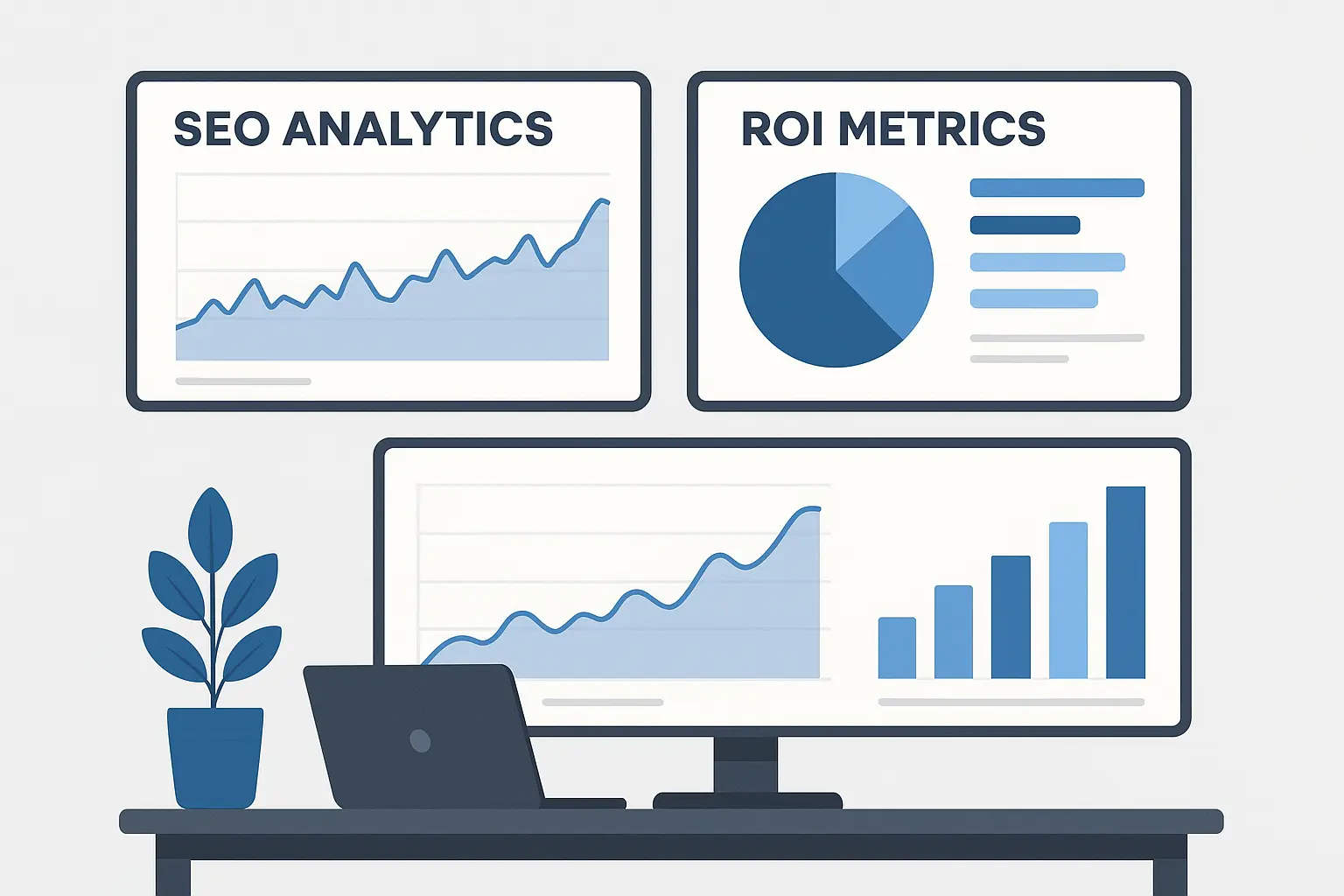
Here’s the brutal truth I’ve learned after working with dozens of Fortune 500 companies: most of them are throwing millions at SEO and have no clue if it’s actually working. According to Enterprise SEO ROI Calculator, “A good Enterprise SEO ROI typically ranges from 200% to 500%, but can vary significantly based on industry, competition, and market conditions,” yet most large companies struggle to achieve even basic positive returns.
It’s not because SEO doesn’t work at enterprise scale—it’s because they’re measuring it all wrong.
Last month, I sat in a boardroom with a tech company’s CMO who looked me dead in the eye and said, “We spent $2.3 million on SEO last year. Can you tell me what we got for it?” The silence was deafening. Their “ROI report” was basically a PowerPoint deck full of vanity metrics that meant nothing to the CFO sitting across the table.
The problem isn’t that SEO doesn’t deliver results—it’s that traditional measurement approaches completely break down when you’re dealing with complex attribution models, multiple stakeholders, and massive data volumes.
Table of Contents
-
Understanding Enterprise SEO ROI Fundamentals
-
Building Your Enterprise SEO ROI Calculator Framework
-
Implementation Process and Best Practices
-
Advanced ROI Optimization Strategies
TL;DR
-
Enterprise SEO ROI calculation requires sophisticated attribution models that track multiple touchpoints across complex customer journeys
-
Building effective calculators means integrating data from multiple platforms while creating user-friendly interfaces for different stakeholder groups
-
Implementation success depends on thorough stakeholder requirements gathering and comprehensive training programs
-
Advanced optimization uses predictive modeling and machine learning to forecast performance and maximize returns
-
Multi-domain portfolio management demands consolidated tracking systems that provide weighted performance metrics
Understanding Enterprise SEO ROI Fundamentals
Measuring enterprise SEO ROI isn’t like tracking a small business blog. You’re dealing with massive complexity that would make most marketers’ heads spin. The fundamentals require understanding how revenue flows through different channels, how costs accumulate across departments, and why traditional ROI models often fail at enterprise scale.
When I work with Fortune 500 companies, the first thing that hits me is how their SEO data is scattered everywhere. Marketing uses one analytics platform, sales tracks leads in their CRM, finance has their own revenue reporting, and IT maintains separate performance monitoring tools. Getting a unified view of enterprise SEO ROI means connecting all these disparate data sources into something that actually makes sense.
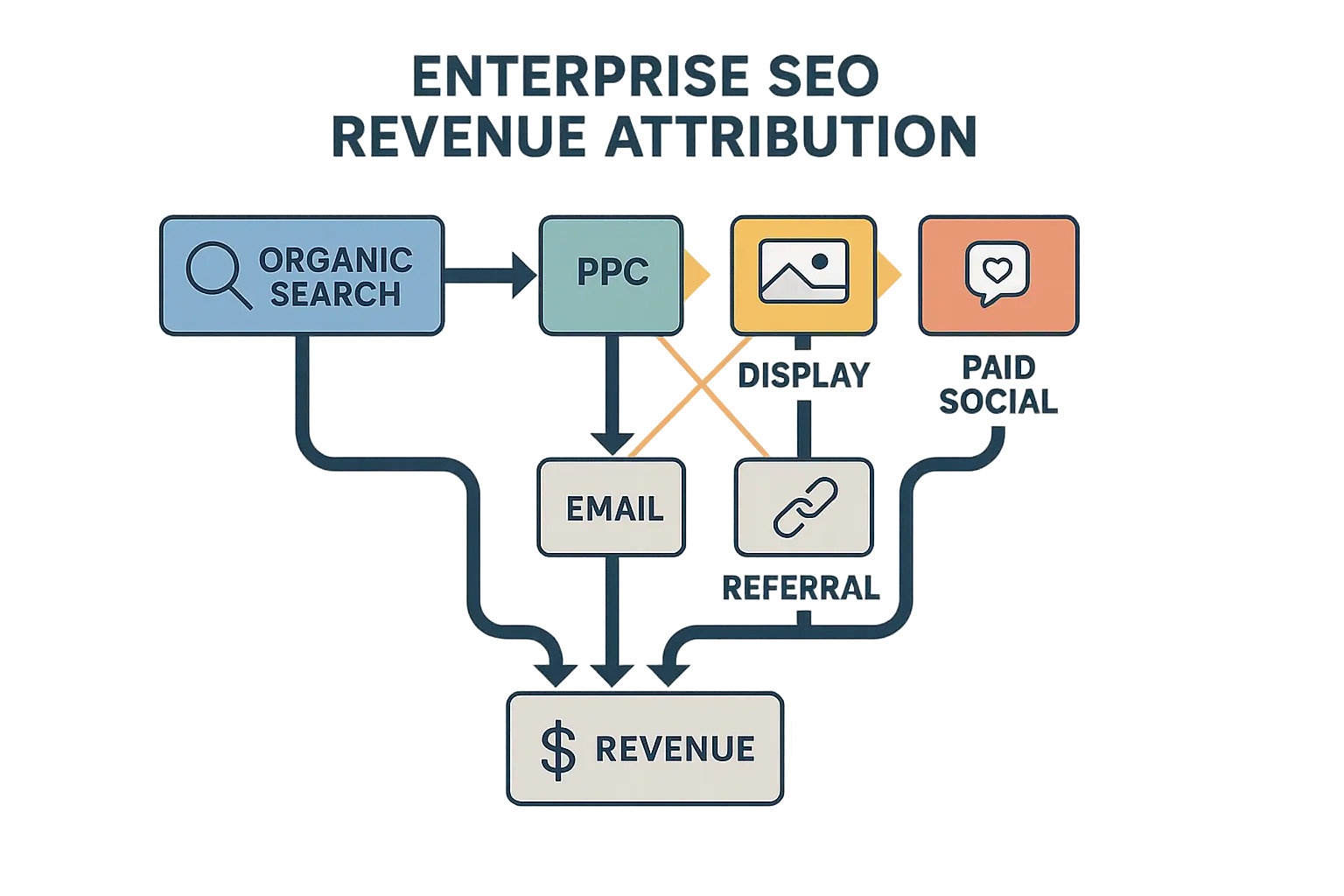
Defining Enterprise SEO ROI Components
Enterprise ROI calculations must capture revenue streams that span multiple departments, attribution models that track complex customer journeys, and cost structures that include everything from internal resources to opportunity costs. These components work together to create a comprehensive picture of SEO investment returns.
Revenue Attribution Models
Here’s where most companies completely screw this up. They’re trying to use small business attribution models for massive, complex operations. You need sophisticated tracking that follows customers through multiple touchpoints, and that’s where things get messy.
Your attribution model should capture:
-
First-touch organic discovery
-
Mid-funnel content engagement
-
Cross-channel influence on conversions
-
Post-purchase customer lifetime value
The challenge isn’t just tracking these touchpoints—it’s weighting them correctly. When someone discovers your brand through organic search, engages with your content over three months, then converts through a paid ad, how much credit does SEO get?
I’ll never forget this one client—a massive B2B software company—who proudly showed me their attribution model. They were giving SEO 70% credit for any deal where the prospect had visited their blog at some point in the previous year. Seventy percent! I asked their CFO what he thought about that logic. His response? “That’s the dumbest thing I’ve ever heard.” Back to the drawing board we went.
According to Ahrefs Enterprise SEO ROI Calculator, “Ideally, this ratio should be at least 3:1. A higher ratio indicates efficient customer acquisition relative to customer lifetime value,” providing a benchmark for evaluating attribution model effectiveness.
Cost Structure Analysis
Enterprise SEO costs hide in places you wouldn’t expect. Sure, you’ve got your agency fees and tool subscriptions, but what about all the hidden stuff?
Your cost analysis should include:
-
Direct SEO investments (agencies, tools, content creation)
-
Internal team time allocation
-
Technology infrastructure and development resources
-
Opportunity costs from resource allocation decisions
That developer who spent two weeks implementing schema markup? That’s a cost. The product manager who attended SEO strategy meetings? Also a cost. The executive time spent reviewing SEO reports? You guessed it—cost.
Similar to how comprehensive GA4 audit processes reveal hidden tracking gaps, most enterprises underestimate their true SEO investment by 40-60% because they only track direct expenses. This skews ROI calculations and leads to terrible decision-making.
I worked with a Fortune 500 tech company last year that thought they were spending $500K on SEO. Turns out, when we actually tracked everything—developer time, manager meetings, executive reviews—they were closer to $580K. That’s a 16% miscalculation that made their ROI look way better than it actually was. The CFO was not amused when we presented the real numbers.
Time-to-Value Considerations
Here’s what nobody tells you about enterprise SEO: it’s slow as molasses. While your paid ads team is celebrating wins next week, you’re playing the long game. Try explaining to an impatient CEO why they need to wait 12 months to see real results. It’s not fun.
Your time-to-value model needs to account for:
-
Delayed revenue recognition from SEO investments
-
Compound growth effects over extended periods
-
Seasonal variations in organic performance
-
Market condition changes during investment periods
Traditional ROI calculations assume immediate returns. Enterprise SEO requires models that can handle delayed gratification and show value accumulation over time. Without this, you’ll constantly be defending SEO investments against channels that show faster (but often less sustainable) returns.
Enterprise-Specific ROI Challenges
Large organizations face measurement obstacles that don’t exist elsewhere: data scattered across multiple systems, complex approval processes, international considerations, and stakeholder groups with conflicting success criteria. These challenges require specialized approaches to ROI calculation and reporting.
When You’re Juggling Multiple Websites (And Losing Your Mind)
Managing ROI across multiple websites creates complexity that most calculators can’t handle. You might have:
-
Primary corporate website
-
Product-specific microsites
-
Regional or country-specific domains
-
Subdomain properties for different business units
Each property has different goals, audiences, and performance metrics. Your ROI calculator needs to provide both individual property insights and consolidated portfolio views.
Here’s where most people mess this up completely: they get excited about a 50% traffic increase on some tiny microsite while ignoring a 20% bump on their main money-maker. It’s like celebrating because your garage sale made $50 while your main business lost $5,000. Priorities, people.
|
Domain Type |
Traffic Weight |
Revenue Weight |
Strategic Importance |
ROI Calculation Method |
|---|---|---|---|---|
|
Primary Corporate |
40% |
60% |
Critical |
Full attribution model |
|
Product Microsites |
25% |
30% |
High |
Product-specific LTV |
|
Regional Domains |
20% |
8% |
Medium |
Localized conversion rates |
|
Support Subdomains |
15% |
2% |
Low |
Cost reduction metrics |
Stakeholder Alignment Requirements
CEOs and marketing managers might as well speak different languages when it comes to ROI. The CEO wants to know if SEO is worth more than hiring another salesperson. The marketing manager wants to know which blog posts are crushing it. Your calculator needs to speak both languages without making anyone’s brain hurt.
Executive stakeholders typically want:
-
High-level financial impact summaries
-
Competitive positioning insights
-
Strategic growth trajectory projections
Marketing teams need:
-
Channel-specific performance breakdowns
-
Campaign-level ROI analysis
-
Optimization opportunity identification
Finance departments require:
-
Detailed cost accounting
-
Revenue attribution validation
-
Budget allocation justifications
Building a calculator that serves all these needs without overwhelming any single user group requires careful interface design and flexible reporting capabilities that don’t make people want to throw their laptops out the window.
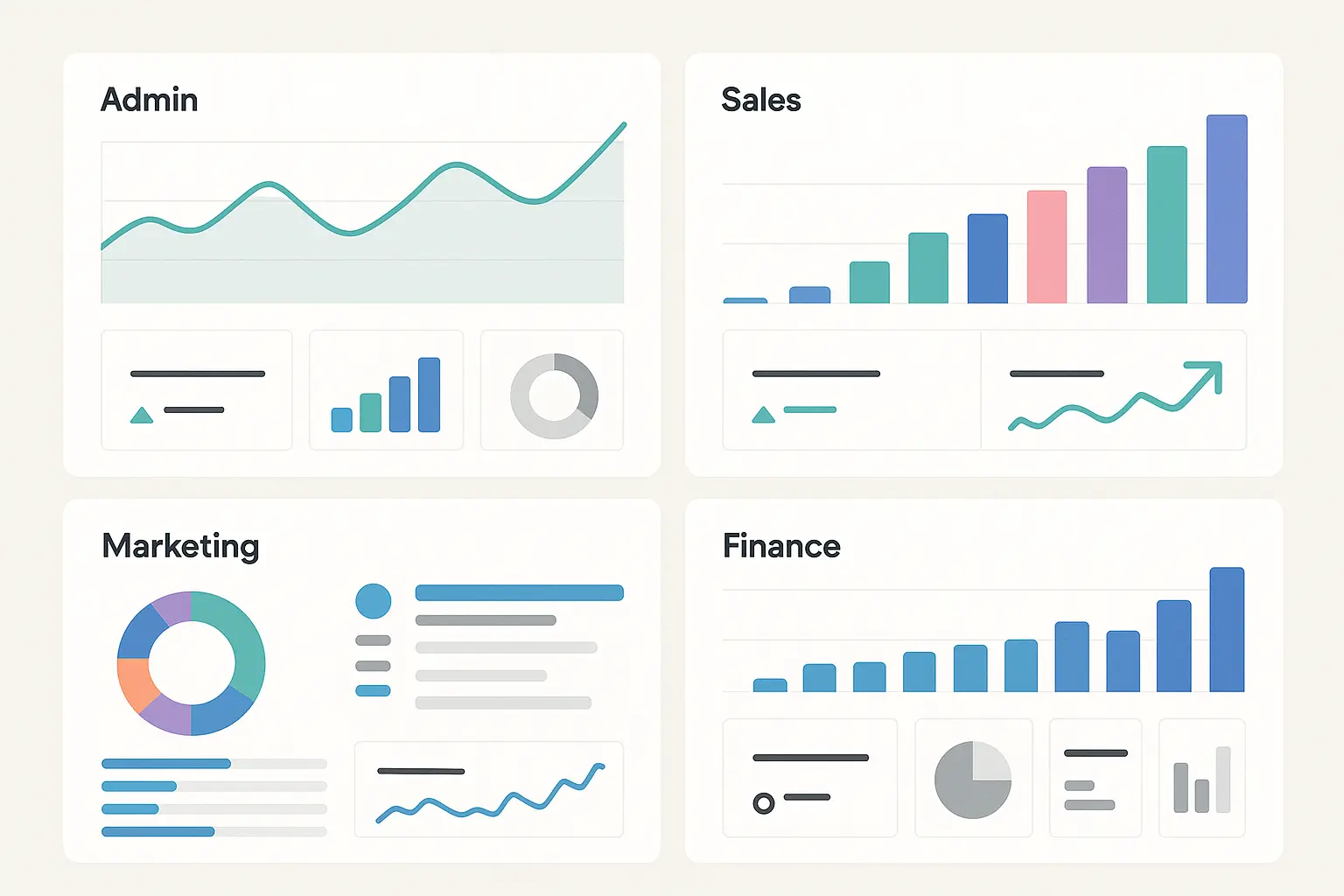
Building Your Enterprise SEO ROI Calculator Framework
Creating an effective enterprise SEO ROI calculator requires understanding the essential metrics that matter at scale, designing architecture that handles complex data integration, and building interfaces that serve different stakeholder needs. The framework must balance comprehensive data capture with usability across different organizational roles.
Essential Metrics and Data Points
Enterprise calculators must capture both quantitative financial indicators and qualitative business impact measures. This includes primary revenue metrics and supporting indicators that contribute to overall ROI through different measurement approaches.
Primary Revenue Metrics
Your calculator’s foundation rests on financial metrics that directly tie SEO performance to business outcomes. These aren’t vanity metrics—they’re numbers that finance teams understand and executives actually care about.
Core revenue indicators include:
-
Organic traffic conversion value
-
Customer acquisition cost through SEO
-
Customer lifetime value from organic channels
-
Market share impact from search visibility
Organic revenue calculation gets tricky at enterprise scale because you’re dealing with multiple conversion paths and attribution windows. Someone might discover your brand through organic search, research for weeks, then convert through a different channel. Your calculator needs to capture this complexity without making everyone’s head explode.
Customer lifetime value becomes particularly important for enterprise B2B companies where single customers might be worth hundreds of thousands or millions of dollars. A small improvement in organic customer quality can dramatically impact ROI calculations.
When determining market opportunities, applying proven market sizing methodologies helps establish realistic revenue projections for your SEO ROI calculator framework.
According to Ahrefs Enterprise SEO ROI Calculator, key metrics include “Average Revenue per Customer (ARPC) ($): The average amount of revenue generated per customer. Calculated as total revenue divided by the number of customers acquired,” which provides the foundation for accurate LTV calculations.
Supporting Performance Indicators
Beyond direct revenue, enterprise SEO delivers value that’s harder to quantify but equally important. Your calculator should capture these secondary benefits, or you’ll be missing half the story.
Brand visibility metrics include:
-
Share of voice in target keyword categories
-
Branded search volume growth
-
Competitive displacement in search results
Operational efficiency gains might include:
-
Reduced paid advertising costs due to organic growth
-
Decreased customer service volume from better content
-
Improved sales team efficiency from qualified organic leads
These supporting indicators often justify SEO investments even when direct revenue attribution is challenging. They’re particularly valuable for defending SEO budgets during economic downturns when companies scrutinize every expense like hawks.
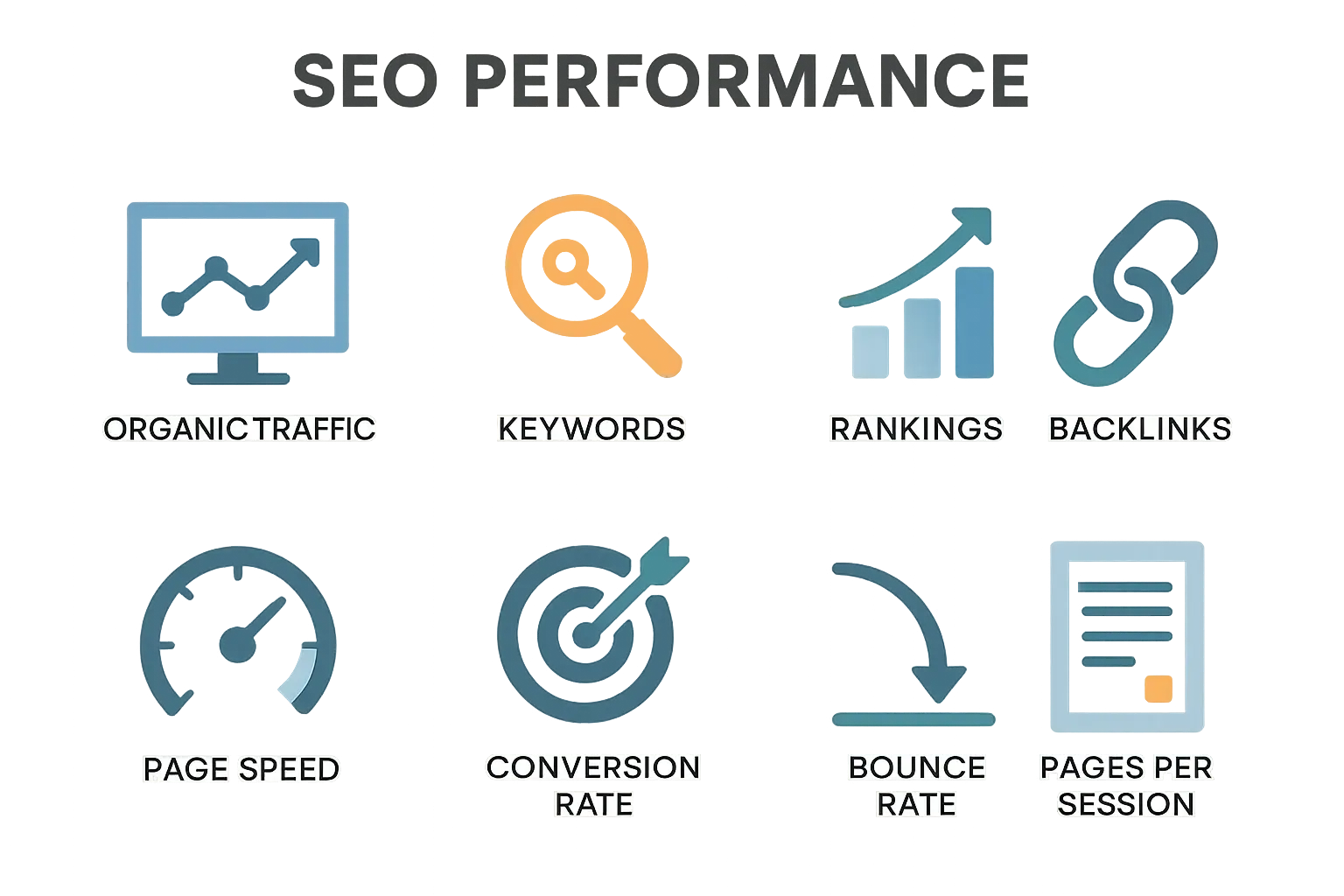
Calculator Architecture and Design
Building calculators that handle enterprise data volumes while remaining user-friendly requires careful attention to data integration requirements, scenario modeling capabilities, and reporting features. The architecture must connect multiple systems seamlessly while providing flexible analysis and visualization options for different audiences.
Data Integration Requirements
Enterprise data is like that friend who never answers their phone—it’s scattered across a dozen different places, none of them talk to each other, and finding what you need feels impossible. Your calculator needs to be the translator that gets everyone speaking the same language.
API integrations should include:
-
Web analytics platforms for traffic and conversion data
-
CRM systems for customer value and attribution
-
Financial systems for cost and revenue validation
-
SEO tools for ranking and competitive intelligence
Here’s a guarantee: your systems will disagree with each other. Google Analytics says 100 conversions, Salesforce says 87, and your finance team insists it’s 93. Instead of pretending this isn’t happening, your calculator should help you figure out why and what to do about it.
Just as selecting the right SEO content tools impacts content performance measurement, real-time data updates become crucial for enterprise calculators. Stakeholders expect current information, not last month’s numbers. Your architecture should support automated data refreshes without requiring some poor intern to manually download CSV files every month. Trust me, manual data exports are where good intentions go to die.
Recent developments in SEO measurement highlight the importance of comprehensive data integration. As noted in “Calculate ROI SEO Targeting Keywords” by Search Engine Journal, “SEO pros have the benefit of keyword volume data that provides insight into what people are interested in (data that other channels may not have),” emphasizing the unique value proposition of integrated SEO data systems.
Scenario Modeling Capabilities
Enterprise SEO decisions involve significant investments and long-term commitments. Your calculator should support “what-if” analysis that helps stakeholders understand potential outcomes without having to guess.
What if you doubled your content budget? What if you hired two more SEO people? What if your biggest competitor started throwing money at SEO? Your calculator should be able to run these “what-if” scenarios so you’re not flying blind when making big decisions.
Scenario modeling features include:
-
Budget allocation optimization across different SEO initiatives
-
Timeline projections for various investment levels
-
Sensitivity analysis for key assumption changes
-
Competitive response modeling
These modeling capabilities transform your calculator from a reporting tool into a strategic planning instrument that guides decision-making instead of just showing you what happened last quarter.
A global SaaS company used scenario modeling to evaluate three investment options: increasing content budget by $200,000 (projected 18% ROI increase), hiring two additional SEO specialists ($180,000 cost, 25% ROI increase), or expanding to three new geographic markets ($300,000 investment, 35% ROI increase). The modeling revealed that geographic expansion offered the highest long-term returns despite higher initial costs.
Reporting and Visualization Features
Different stakeholders need different views of the same data. Your calculator should provide role-specific dashboards without requiring separate tools or making everyone learn a new system.
Executive dashboards focus on:
-
High-level ROI trends and projections
-
Competitive positioning summaries
-
Strategic initiative performance
Marketing team views emphasize:
-
Channel performance comparisons
-
Campaign-specific ROI breakdowns
-
Optimization opportunity identification
Finance-focused reports highlight:
-
Detailed cost accounting and attribution
-
Budget variance analysis
-
Revenue forecasting accuracy
The visualization layer should make complex data accessible. Interactive charts, drill-down capabilities, and customizable date ranges help users find insights relevant to their specific needs without drowning in irrelevant information.

Implementation Process and Best Practices
Successfully deploying enterprise SEO ROI calculators requires careful pre-implementation planning, stakeholder buy-in, and comprehensive training programs. The process involves gathering requirements from different organizational groups, auditing existing data systems, and establishing quality assurance protocols to ensure accuracy and adoption.
Pre-Implementation Planning
Establishing clear objectives, data governance protocols, and success criteria before building ROI calculation systems prevents costly mistakes and ensures stakeholder alignment. This planning phase includes requirements gathering from different teams and comprehensive data auditing to identify gaps and establish baselines.
Stakeholder Requirements Gathering
You can’t build something useful if you don’t know what people actually need. And here’s the kicker—what they say they want in meetings isn’t always what they actually need to do their jobs.
Start with structured interviews across key groups:
-
C-level executives (strategic decision-making needs)
-
Marketing leadership (campaign optimization requirements)
-
Finance teams (accounting and validation standards)
-
SEO specialists (tactical optimization insights)
Each group has different questions they need answered. CEOs might want to know if SEO is worth the investment compared to other growth channels. CMOs need to understand which SEO initiatives drive the best returns. CFOs require detailed cost accounting that satisfies audit requirements.
Document these requirements in detail. Vague statements like “we need better reporting” don’t help anyone. Specific needs give you something actionable to build toward.
Enterprise SEO ROI Requirements Checklist:
-
☐ Executive reporting frequency and format preferences
-
☐ Marketing team optimization decision criteria
-
☐ Finance department cost accounting standards
-
☐ SEO team tactical insight requirements
-
☐ Legal/compliance data handling requirements
-
☐ IT security and integration protocols
-
☐ Historical data retention policies
-
☐ Cross-department access permissions
-
☐ Audit trail and documentation standards
-
☐ Performance benchmark definitions
Data Audit and Preparation
Plot twist: your data is probably a mess. I know, I know—shocking revelation. Every enterprise thinks their data is pristine until we start digging. Then it’s like opening a closet that’s been stuffed for years. Everything falls out, and you realize you’ve been living in denial.
Your data audit should examine:
-
Analytics platform configuration and tracking accuracy
-
CRM data quality and attribution completeness
-
Financial system integration capabilities
-
Historical data availability and consistency
I’ve seen companies spend months building calculators only to discover their conversion tracking was broken for the past year. Or that their CRM doesn’t capture organic traffic source attribution. Fix these problems before you start building, or you’ll be rebuilding everything in six months. Trust me on this one—I’ve seen too many companies learn this lesson the hard way.
Establish baseline measurements during this phase. You need historical benchmarks to measure improvement against. Without baselines, your ROI calculator becomes just another reporting tool instead of a performance measurement system.
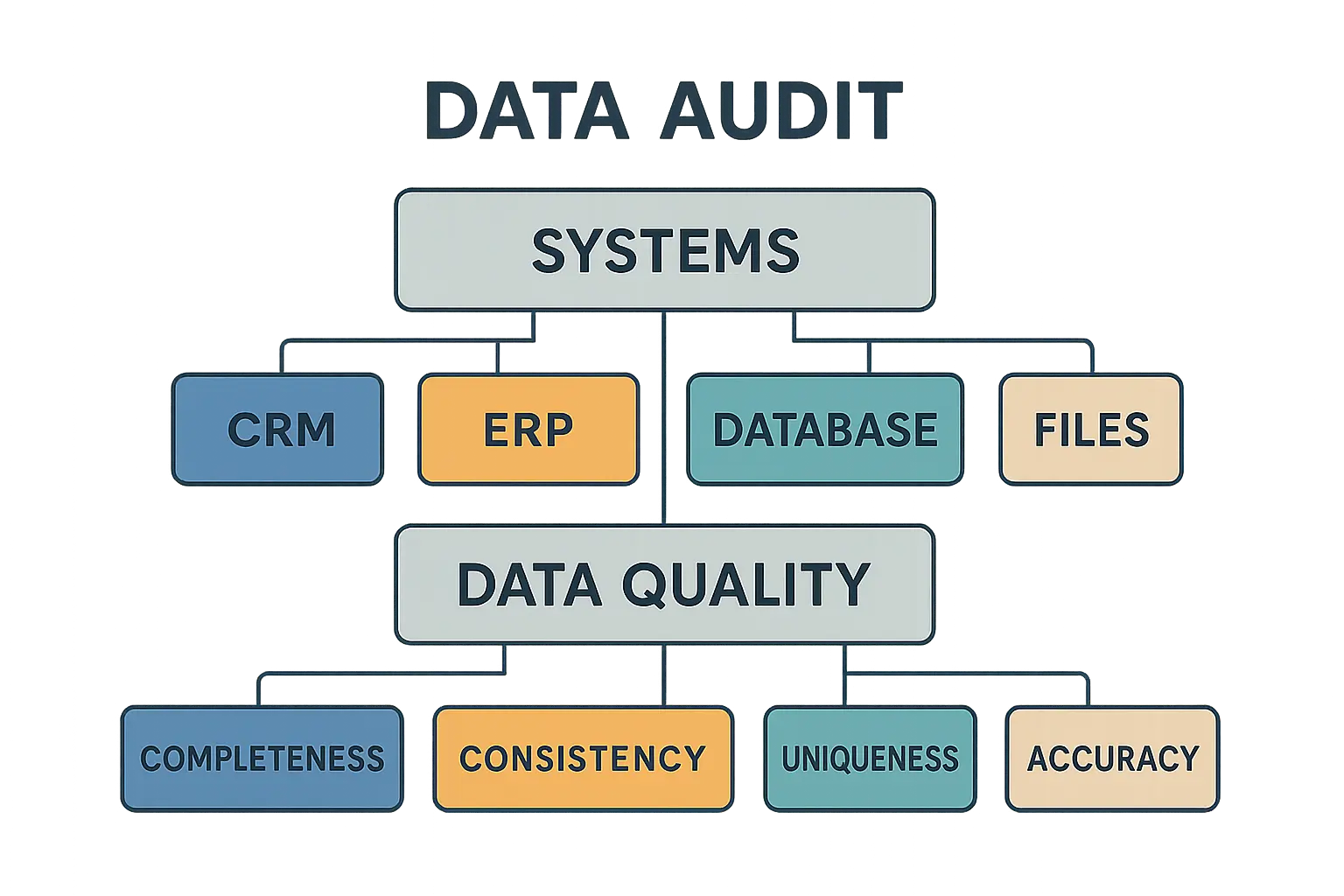
According to Enterprise SEO ROI Calculator, “Enterprise SEO typically shows meaningful ROI within 6-12 months. However, the exact timeline depends on factors like current site authority, competition, and investment level,” making baseline establishment crucial for accurate timeline projections.
Deployment and Training Strategy
Rolling out ROI calculators requires comprehensive training programs, clear documentation, and ongoing support systems. Success depends on user adoption across different organizational levels, which requires role-specific training materials and quality assurance protocols to maintain accuracy over time.
User Training Programs
I’ve watched brilliant calculators become expensive paperweights because nobody knew how to use them. You’ll spend months building something amazing, launch it with great fanfare, then watch it collect digital dust because the marketing team is afraid they’ll break something if they click the wrong button.
Role-specific training should cover:
-
Executive briefings on high-level interpretation and strategic implications
-
Marketing team workshops on campaign optimization and tactical insights
-
Finance team sessions on cost accounting methodology and validation processes
-
SEO specialist deep-dives on technical implementation and troubleshooting
Here’s an uncomfortable truth: half your marketing team doesn’t really understand ROI calculations. They nod along in meetings and hope nobody asks them to explain attribution models. Your training needs to start with the basics, not the advanced stuff that makes everyone’s eyes glaze over.
Similar to how choosing between Ahrefs vs Semrush requires understanding different tool capabilities, create training materials that people can reference later—video tutorials, written guides, and FAQ documents. Live training sessions are great for initial rollout, but people need resources they can access when questions arise months later.
The importance of comprehensive training is highlighted in recent SEO industry developments. As reported in “Semrush Pricing” by Exploding Topics, “That’s an SEO ROI of 450%, so your Semrush cost is easily covered with the revenue gains you can expect,” demonstrating how proper tool utilization through training directly impacts ROI outcomes.
Quality Assurance Protocols
Enterprise ROI calculators handle significant financial data and influence major business decisions. Quality assurance isn’t optional—it’s essential for maintaining credibility and accuracy.
Implement validation processes that include:
-
Regular data accuracy audits comparing calculator outputs to source systems
-
Stakeholder feedback loops for identifying calculation discrepancies
-
Version control and change management for calculator updates
-
Performance monitoring to ensure system reliability
Monthly validation reports should compare calculator results to known benchmarks. If your calculator shows 150% ROI but manual calculations suggest 120%, you need to understand why before someone starts asking uncomfortable questions in the next board meeting.
Want to kill your calculator’s credibility instantly? Let an obvious error sit there for three months while everyone pretends not to notice. I’ve seen calculators showing 2000% ROI that nobody questioned because “the system said so.” Use your brain, people.
|
QA Protocol |
Frequency |
Responsible Party |
Success Criteria |
Escalation Threshold |
|---|---|---|---|---|
|
Data Accuracy Audit |
Monthly |
Data Analytics Team |
<5% variance from source |
>10% variance |
|
Stakeholder Feedback Review |
Bi-weekly |
Project Manager |
100% issue response |
Unresolved issues >7 days |
|
System Performance Check |
Daily |
IT Operations |
99.9% uptime |
Downtime >15 minutes |
|
Calculation Validation |
Weekly |
Finance Team |
Match manual calculations |
>3% discrepancy |
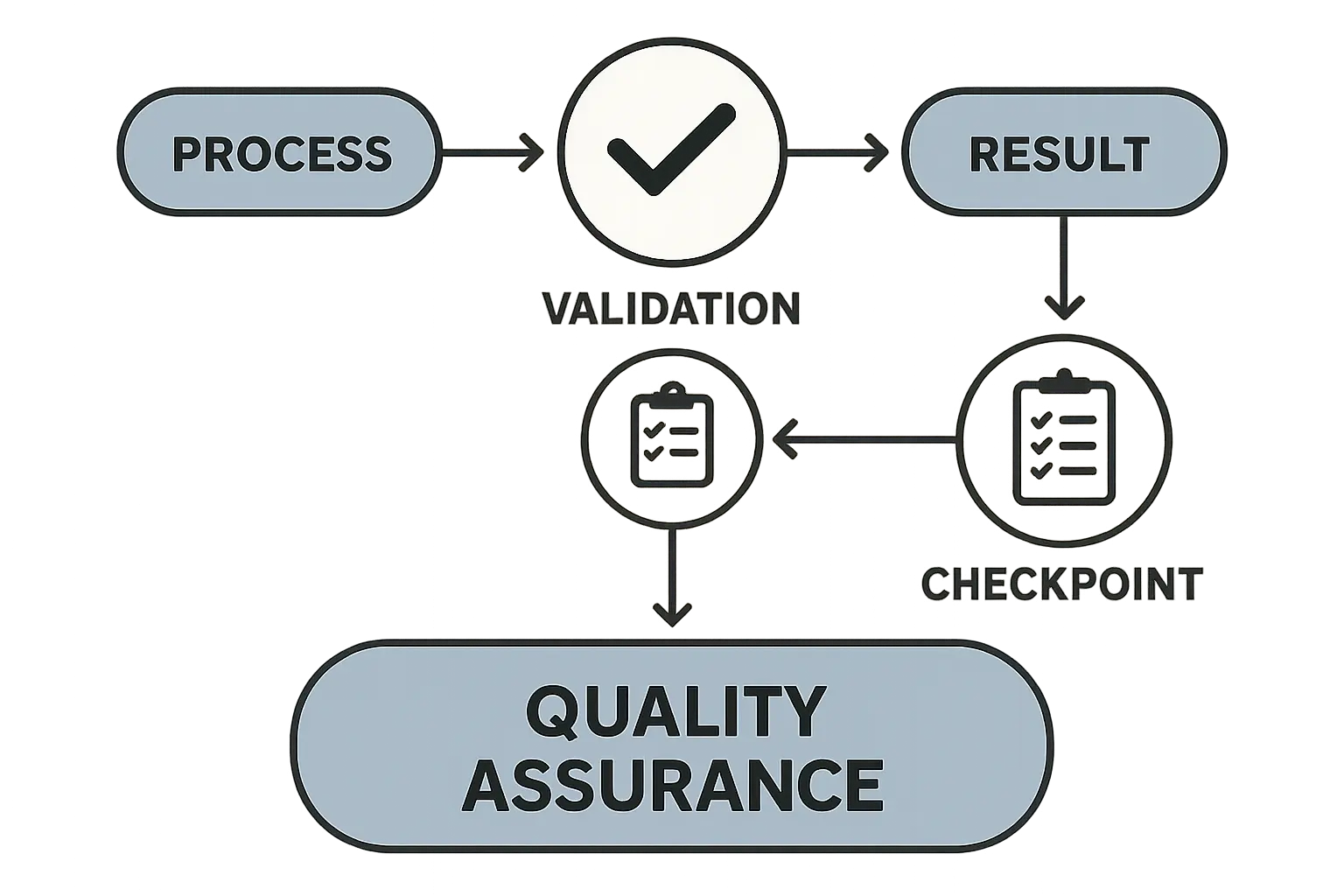
Advanced ROI Optimization Strategies
Moving beyond basic ROI calculation involves implementing predictive modeling, competitive intelligence integration, and continuous optimization frameworks. These advanced strategies use machine learning algorithms, market trend analysis, and structured review processes to forecast performance and maximize SEO investment returns.
Predictive ROI Modeling
Using historical performance data and market trends to forecast future SEO returns enables better resource allocation and strategic planning. This involves machine learning integration for pattern recognition and competitive intelligence incorporation to benchmark performance against market opportunities.
Machine Learning Integration
Traditional ROI calculators show you what happened. Advanced systems predict what will happen based on current trends and historical patterns. It’s like having a crystal ball, except it actually works.
Machine learning algorithms can identify:
-
Seasonal performance patterns that affect ROI projections
-
Content performance indicators that predict long-term success
-
Competitive activity patterns that impact organic visibility
-
Market trend correlations that influence search behavior
Your algorithm might notice that content published in Q1 consistently outperforms Q4 content by 30% over 12-month periods. This insight helps optimize content investment timing for maximum ROI instead of just throwing money at content whenever you feel like it.
The key is feeding your algorithms enough high-quality data to generate reliable predictions. Garbage in, garbage out applies especially to machine learning ROI models. Clean, consistent historical data spanning multiple years provides the foundation for accurate forecasting.
A multinational retailer implemented machine learning ROI prediction that analyzed 3 years of historical data across 15 markets. The algorithm identified that SEO investments made 4 months before peak shopping seasons generated 40% higher ROI than investments made during peak periods. This insight led to a strategic shift in budget timing that increased overall SEO ROI from 180% to 290% within one year.

Competitive Intelligence Integration
Your SEO ROI doesn’t exist in a vacuum. Competitive activity directly impacts your organic performance and return calculations, whether you want to acknowledge it or not.
Competitive intelligence should track:
-
Competitor content investment levels and topics
-
Market share changes in target keyword categories
-
Competitive paid search activity that affects organic click-through rates
-
Industry trend adoption rates that create new opportunities
When competitors increase their SEO investments, your ROI might decline even if your absolute performance improves. Conversely, competitive weaknesses create opportunities for outsized returns from strategic investments.
Integrate competitive data into your ROI projections to provide realistic expectations. If three major competitors are launching content initiatives in your target market, factor that competitive pressure into your forecasts instead of pretending it won’t affect you.
Continuous Optimization Framework
Establishing structured processes for regular ROI review, strategy adjustment, and performance improvement ensures SEO investments remain aligned with business objectives. This framework includes performance review cycles and systematic optimization identification to drive continuous improvement.
Performance Review Cycles
Bottom line: if you’re not regularly reviewing and tweaking your ROI calculations, you’re basically driving with a blindfold on. The market changes, your business changes, and your calculator needs to keep up or become irrelevant.
Quarterly reviews should examine:
-
ROI trend analysis and variance from projections
-
Attribution model accuracy and adjustment needs
-
Competitive landscape changes affecting performance
-
Resource allocation optimization opportunities
Monthly tactical reviews focus on:
-
Campaign-level ROI performance and optimization needs
-
Content investment returns and topic opportunity identification
-
Technical SEO impact on conversion rates and user experience
-
Cross-channel attribution accuracy and adjustment requirements
Annual strategic reviews address:
-
Overall SEO investment strategy and budget allocation
-
Market opportunity assessment and competitive positioning
-
Technology stack evaluation and upgrade requirements
-
Organizational capability development needs
Just as identifying high-impact blog topics requires systematic analysis, these review cycles create accountability and ensure your ROI calculator remains a living tool that drives continuous improvement rather than just historical reporting.
The framework should include clear escalation procedures for significant ROI variances. If quarterly results deviate significantly from projections, you need defined processes for investigation and strategy adjustment.
Continuous Optimization Review Checklist:
-
☐ Monthly ROI performance vs. projections analysis
-
☐ Quarterly competitive landscape assessment
-
☐ Semi-annual attribution model accuracy review
-
☐ Annual strategic alignment evaluation
-
☐ Ongoing data quality monitoring
-
☐ Regular stakeholder satisfaction surveys
-
☐ Technology stack performance evaluation
-
☐ Resource allocation optimization review
-
☐ Market trend impact assessment
-
☐ Cross-channel integration effectiveness
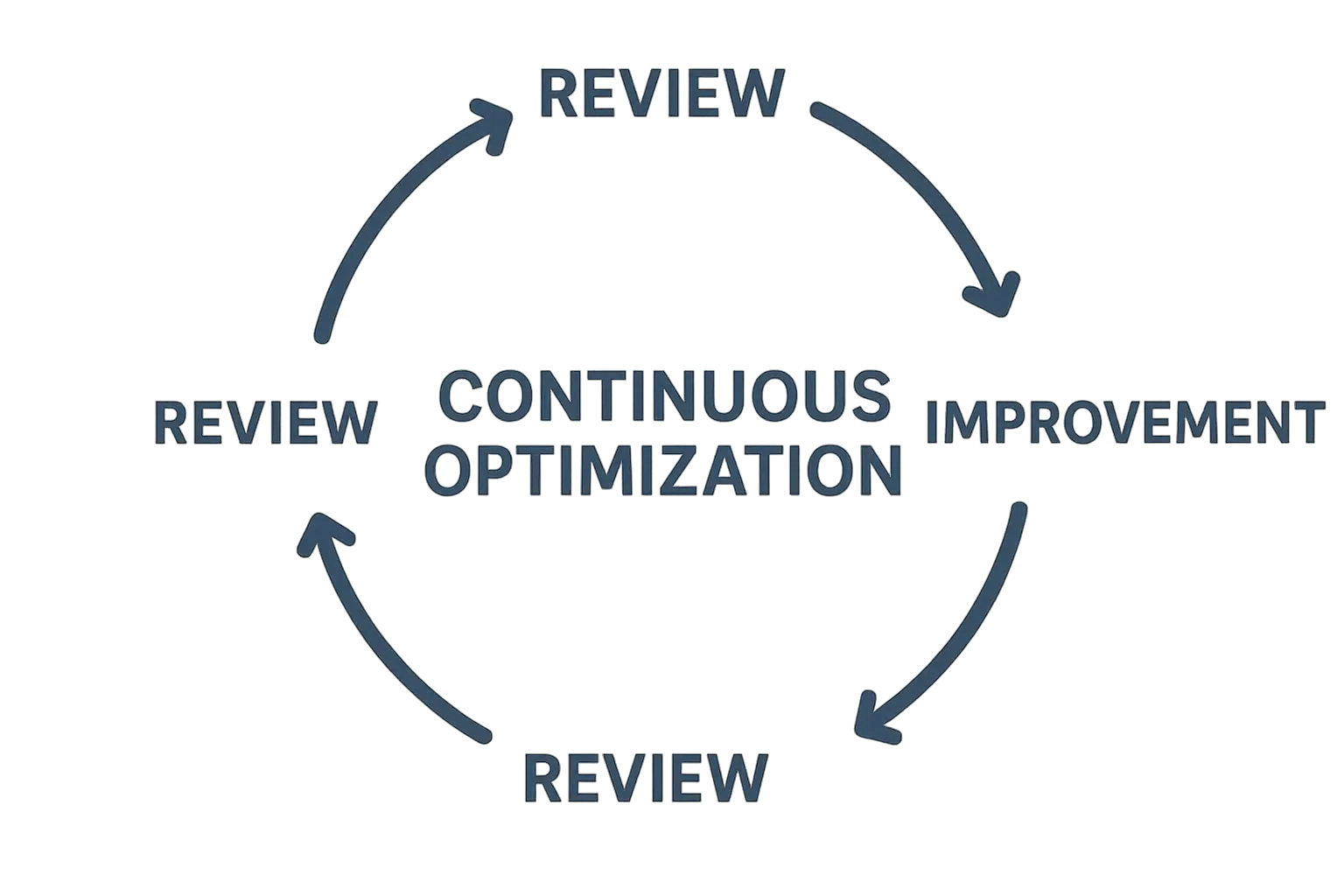
The Marketing Agency’s data-driven approach addresses these enterprise SEO ROI challenges through real-time analytics and transparent reporting systems. Their commitment to showing exactly “what’s working, what’s not, and where every dollar is going” provides the accountability and optimization capabilities that enterprise ROI calculators require.
Ready to build an enterprise SEO ROI calculator that actually drives results? Contact The Marketing Agency to discuss how their proven systems can transform your SEO investment tracking and optimization.
Final Thoughts
Look, building an enterprise SEO ROI calculator isn’t rocket science, but it’s not simple either. Get the basics right—clean data, proper training, regular reviews—and you’ll have something that actually helps people make better decisions. Mess up the fundamentals, and you’ll have an expensive dashboard that nobody uses.
Enterprise SEO ROI calculators represent more than just measurement tools—they’re strategic instruments that can transform how large organizations approach search marketing investments. Success requires understanding the unique complexities of enterprise environments, building robust technical frameworks, and implementing comprehensive training and optimization processes. The investment in sophisticated ROI calculation capabilities pays dividends through better decision-making, improved stakeholder alignment, and optimized resource allocation that drives sustainable organic growth.
